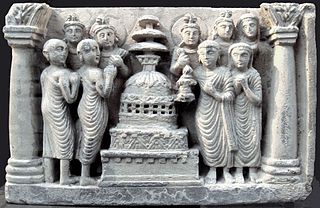 W
WA ritual is a sequence of activities involving gestures, words, actions, or objects, performed according to a set sequence. Rituals may be prescribed by the traditions of a community, including a religious community. Rituals are characterized, but not defined, by formalism, traditionalism, invariance, rule-governance, sacral symbolism, and performance.
 W
WBabulang is the largest festival of the traditional Bisaya community of Limbang, Sarawak. The festival showcases various music, songs, dances, colourful traditional costumes, decorations and handicrafts.
 W
WThe balady citron is a variety of citron, or etrog, grown in Israel, mostly for Jewish ritual purposes. Not native to the region, it was imported around 500 or 300 BCE by either Jewish or Greek settlers. Initially not widely grown, it was promoted and popularized in the 1870s by Rabbi Chaim Elozor Wax.
 W
WBlood brother can refer two or more men not related by birth who have sworn loyalty to each other. This is in modern times usually done in a ceremony, known as a blood oath, where each person makes a small cut, usually on a finger, hand or the forearm, and then the two cuts are pressed together and bound, the idea being that each person's blood now flows in the other participant's veins. The act carries a risk due to blood-borne diseases. The process usually provides a participant with a heightened symbolic sense of attachment with the other participant.
 W
WBull-leaping is a term for various types of non-violent bull fighting. Some are based on an ancient ritual from the Minoan civilization involving an acrobat leaping over the back of a charging bull. As a sport it survives in modern France, usually with cows rather than bulls, as course landaise; in Spain, with bulls, as recortes and in Tamil Nadu, India with bulls as Jallikattu.
 W
WThe ceremonial use of lights occurs in liturgies of various Christian Churches, as well as in Jewish, Zoroastrian and Hindu rites and customs.
 W
WChu is a Daoist name used for various religious practices including communal chu (Kitchen) banquet rituals in Way of the Celestial Masters liturgy, the legendary xingchu associated with Daoist xian, and wuchu representing the wuzang in neidan meditation techniques.
 W
WCircumambulation is the act of moving around a sacred object or idol.
 W
WAn invocation may take the form of:
 W
WA jia is a ritual vessel type found in both pottery and bronze forms; it was used to hold libations of wine for the veneration of ancestors. It was made either with four legs or in the form of a tripod and included two pillar-like protrusions on the rim that were possibly used to suspend the vessel over heat. The earliest evidence of the Jia vessel type appears during the Neolithic Period. It was a prominent form during the Shang and early Western Zhou dynasties, but had disappeared by the mid-Western Zhou.
 W
WA life cycle ritual is a ceremony to mark a change in a person's biological or social status at various phases throughout life. Such practices are found in many societies and are often based on traditions of a community. Life cycle rituals may also have religious significance that is stemmed from different ideals and beliefs.
 W
WMyth and ritual are two central components of religious practice. Although myth and ritual are commonly united as parts of religion, the exact relationship between them has been a matter of controversy among scholars. One of the approaches to this problem is "the myth and ritual, or myth-ritualist, theory," held notably by the so-called Cambridge Ritualists, which holds that "myth does not stand by itself but is tied to ritual." This theory is still disputed; many scholars now believe that myth and ritual share common paradigms, but not that one developed from the other.
 W
WObsessive–compulsive disorder (OCD) is a mental and behavioral disorder in which a person has certain repeated thoughts and/or feels the need to perform certain routines repeatedly to an extent where it induces distress or impairs one's general functioning. The person is unable to control either the thoughts or activities for more than a short period of time. Common compulsions include excessive hand washing, the counting of things, and checking to see if a door is locked. These activities occur to such a degree that the person's daily life is negatively affected, often taking up more than an hour a day. Most adults realize that the behaviors do not make sense. The condition is associated with tics, anxiety disorder, and an increased risk of suicide.
 W
WPas-ta'ai, the “Ritual to the Short People”, is a ritual of the Saisiyat people, a Taiwanese aboriginal group. The ritual commemorates the Ta'ai, a tribe of short dark-skinned people they say used to live near them. The ritual is held every two years and all Saisiyat are expected to participate.
 W
WA potlatch is a gift-giving feast practiced by Indigenous peoples of the Pacific Northwest Coast of Canada and the United States, among whom it is traditionally the primary governmental institution, legislative body, and economic system. This includes the Heiltsuk, Haida, Nuxalk, Tlingit, Makah, Tsimshian, Nuu-chah-nulth, Kwakwaka'wakw, and Coast Salish cultures. Potlatches are also a common feature of the peoples of the Interior and of the Subarctic adjoining the Northwest Coast, although mostly without the elaborate ritual and gift-giving economy of the coastal peoples.
 W
WRitualism, in the history of Christianity, refers to an emphasis on the rituals and liturgical ceremony of the church, in particular of Holy Communion.
 W
WA song is a musical composition intended to be performed by the human voice. This is often done at distinct and fixed pitches (melodies) using patterns of sound and silence. Songs contain various forms, such as those including the repetition and variation of sections.